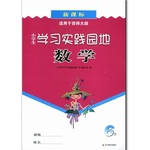题目内容
Look, so many people are running out of the station. I wonder what ______ .
A. is happened B. was happening
C. is happening D. had happened
 学习实践园地系列答案
学习实践园地系列答案Mom always tells me that nothing can be learned __________ hard work.
A. with B. by C. for D. without
Here are three forms of Chinese art.
Calligraphy (书法) The ancient Chinese thought of writing as an important form of art. Calligraphy is a popular form of writing. To produce Chinese characters one needs a brush, paper, inkstick and inkstone. These are called the “Four Treasures of the Study”. It is necessary to learn these tools in order to learn calligraphy. |
Poetry Poetry was an important part of art, Du Fu, Li Bai and Su Shi are considered among the best ancient poets, and there are five major kinds of ancient poetic styles called Shi, Ci, Ge. Qu and Fu. During the Tang Dynasty, poetry became so important that writing poetry was part of the examinations to work for the government. |
Opera Chinese opera is considered as one of the three oldest dramatic art forms in the world. It is a combination of music, art and literature. During the Tang Dynasty, Emperor Taizong set up an opera school. |
1.______ are called the “Four Treasures of the Study”.
A. A pen, a book, inkstick and inkstone
B. A pen, paper, inkstick and inkstone
C. A brush, paper, inkstick and inkstone
D. A brush, paper, inkstick and ink box
2.How many major kinds of poetic styles are there in ancient China?
A. Three. B. Four C. Five D. Six
3.If you waned to wok for the government, you had to learn to write poetry during _______.
A. the Yuan Dynasty B. the Tang Dynasty
C. the Ming Dynasty D. the Qing Dynasty
4.What is a combination of music, art and literature?
A. Opera. B. Painting. C. Calligraphy. D. Poetry.
5.From the passage, we can learn that _______.
A. Calligraphy is one of the three oldest art forms in the world
B. Emperor Taizong of the Song Dynasty set up an opera school
C. Shi and Qu are the two most important poetic styles in ancient china
D. If you want to learn calligraphy, you must learn the “Four Treasures of the Study”

